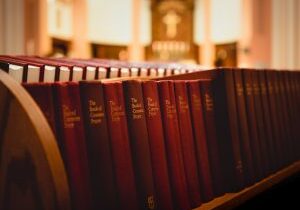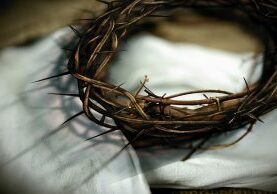Art and Beauty Point to God
Dustin+ Messer
In his book True Paradox, David Skeel makes the point that beauty—especially that beauty which is seen in art—is the result of tension, of one kind or another. Obviously, the kind of tension that typically comes to mind is that between good and bad, right and wrong. Christianity gives a full throated voice to this tension. While the world was created good, it is fallen—which is to say it’s both broken and rebellious—but Christ has come to restore and redeem creation. In other words, Christ has come to resolve this tension.
The fact that beauty is a result of tension—and the tension between good and evil is resolvable—poses an interesting and important question for Christians; namely, “is beauty eternal?” At least the three Abrahamic religions (Christianity, Judaism, and Islam) agree on this point: evil is not eternal—it has a beginning and an end. This tension, most of us agree, will be resolved. However, the Christian faith has a unique claim on beauty specifically. Before the fall, indeed before creation, God lived in perfect love, peace, joy, and relationship. The Father, the Son, and the Spirit were one yet three.
Were God only one—were He a mono-personal being—there would be no tension in eternity past, let alone in the perfect world to come. However, as we know, God is not such a being. While we can, without reservation, affirm the “oneness” of God’s essence, we can also, without reservation, affirm the various personalities of the Trinity. This tension—between Father, Son, and Spirit—is irresolvable. It is the governing reality of the cosmos. Of course, this reality is why we can say that love is eternal. There has always been “love,” a “lover,” and a “beloved.” However, this is also why Christians can say beauty is eternal. Before the creation of the world, God was not stagnant. He was in a complex and textured relationship with His Trinitarian Self. Tension is eternal, in other words, because of the eternality of the Trinity.
We can heartily acknowledge that there are more tensions in the world than those between “good” and “bad.” As a result, when we look at a truly beautiful painting, we appreciate the tension; not only between right and wrong, but also between colors, shades, fabrics, etc. These tensions—those which exist apart from sin—allude to the complexity found in the Godhead. Perhaps this is why a given piece of art can have such a transcendent effect on the viewer. In viewing beauty—as with experiencing love—the viewer is coming in contact with something that lacks a beginning and an end. At its best, this is what art does. Art makes us worship—not the object, but the reality which lies beyond the object, the Triune God of the universe.

The Rev. Dr. Dustin Messer serves as a priest at All Saints Dallas in downtown Dallas, TX. Additionally, Dustin is a regular contributor to The Gospel Coalition and teaches in the department of religious and theological studies at The King's College in New York, NY. A graduate of Boyce College and Covenant Theological Seminary, Dustin earned a doctorate in ethics at La Salle University and went on to complete a fellowship at the Center for the Study of Statesmanship at the Catholic University of America in Washington, DC. Along with his work in local parish ministry, Dustin has served in positions of leadership for a number renewal organizations within the broader Anglican church, including the Global Anglican Future Conference (GAFCON) and the Evangelical Fellowship in the Anglican Communion (EFAC). Dustin is married to his college sweetheart, Whitney, and they have one daughter, Pennilyn Grace.
Category: Spiritual Growth










